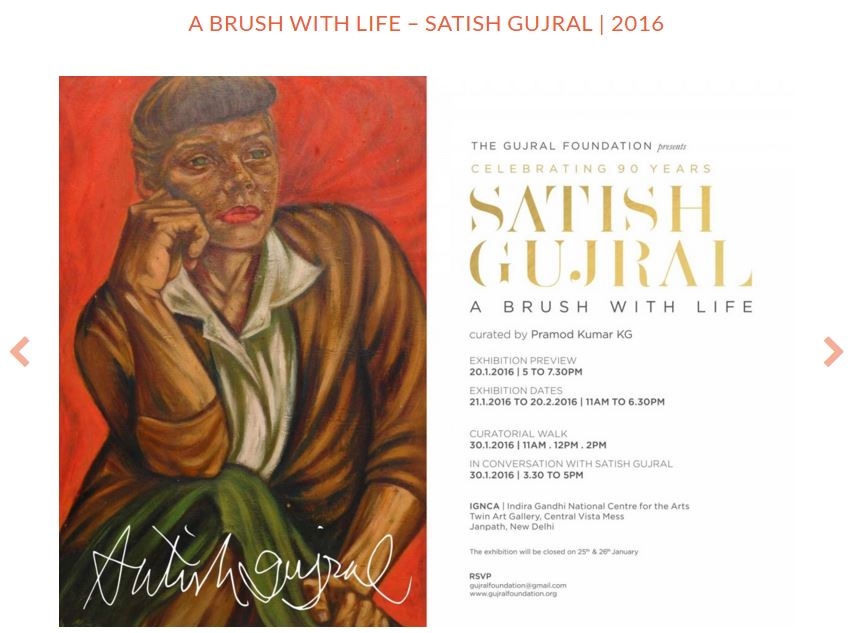Flow India is an organisation that designs and delivers innovative educational experiences that engage with art, heritage and culture. Sujata Parsai writes about a recent arts education workshop for hearing impaired and deaf students in Delhi.
Image: One of the groups invited by Flow was students from the Noida Deaf Society.
In February 2016, Flow India was invited by the Gujral Foundation to implement a creative enquiry workshop around the special exhibition on the works of acclaimed Padma Vibhushan artist Satish Gujral titled, “A brush with life” at the Indira Gandhi National Centre for the Arts (IGNCA). The exhibition was curated by Pramod Kumar KG of Eka Resources.
One of the groups invited by Flow was students from the Noida Deaf Society, as we felt they would relate to the artist’s hearing impairment and in turn be inspired by his life and works. The students from Noida Deaf Society were in the age group of 18-22, all learning computer graphics and design, a vocational career that would help absorb them into mainstream society.
Flow India designed the workshop in a way as to allow children to reflect on how art transcends all limitations, to understand how artists respond to issues and to create art using diverse materials, all while finding a comfortable space in doing so. These themes reflect the life and struggles of the artist himself. While going around the exhibition with Flow facilitators, children fill in a worksheet which explores their own reactions to social stimulus.
Learning about the life of artist, his vast range and scope of works, how he evolved from a painter to mural artist, to sculptor and architect was a fascinating journey for the students. The fact that nothing deterred him from travelling abroad alone, using his new found knowledge to initiate the trend of mural art in India, his amazing use of a variety of media was all of great fascination as well as encouragement for the students.
Image: Satish Gujral transcended his impairment to lead a wonderfully creative and productive life.
A very fascinating anecdote that we shared with students was that at the age of 60, when Mr. Gujaral was fitted with a hearing implant, he had it removed within 6 months! He was able to continue his work, lead a happy family life, and contribute to society through his creative endeavours. His story is an inspiring one for students.
After viewing the exhibition, students were encouraged to focus on their own creative output. Here, Flow organised four stations, each equipped with different art materials. Students were teamed up in small groups at each station and in rotation, giving them the opportunity to experiment with different media and materials, like paint, clay, cloth and paper, charcoal and pencil. Some of these students had never used paint earlier and some had never played with clay. An amazing range of works were produced.
In the plenary session, students empathised with the artist and were most inspired by the fact that he still works today. He has a mastery over various techniques, and his spirit of never allowing circumstances or his disability to limit him left a hopefully lasting impression on the group.
About the Author
 Sujata Parsai is a museologist, art historian, fellow of the V&A, and is currently a senior consultant at Flow India. She has a passion for sharing her in-depth knowledge of Indian culture, art and museum collections with young people and adults alike. Sujata has been a part of the senior team at the National Gallery of Modern Art, New Delhi, a consultant with the TAPI collection at Surat, and has taught art appreciation and museology at various institutions.
Sujata Parsai is a museologist, art historian, fellow of the V&A, and is currently a senior consultant at Flow India. She has a passion for sharing her in-depth knowledge of Indian culture, art and museum collections with young people and adults alike. Sujata has been a part of the senior team at the National Gallery of Modern Art, New Delhi, a consultant with the TAPI collection at Surat, and has taught art appreciation and museology at various institutions.










Recent Comments